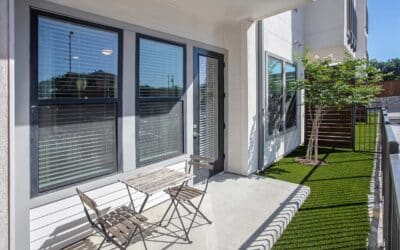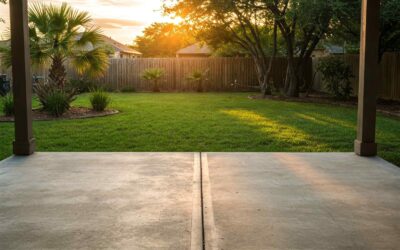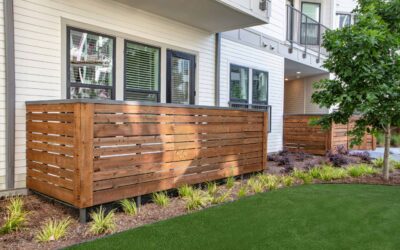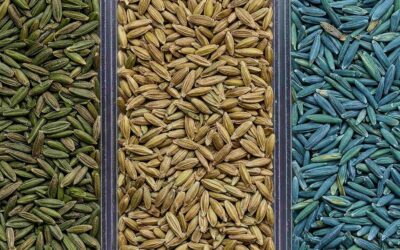The Dooley Field at Sanford Stadium is located on the campus of the University of Georgia (UGA) in Athens. It is the home of the Bulldogs, who compete in the Southeastern Conference (SEC).
Approaching almost a century of service, this historic stadium has seen regular upgrades and restorations over the decades and is one of the most recognizable stadiums in the country.
Unlike most college football teams nationwide, the Bulldogs continue to play their home football on natural grass. So far, the Sanford Stadium has resisted the temptation to switch to artificial turf, which is known for its low maintenance and long-term cost savings.
The debate about artificial turf vs. natural grass playing fields rumbles on. Here’s what you should know…
Does The Sanford Stadium Have Grass or Turf?

Sanford Stadium has had a natural playing surface since it first opened in 1929 and there are no plans to change that at present.
Not only does the stadium boast real grass but it even has real hedges! The grass grows between a series of privet hedges, which have adorned the perimeter of the playing surface ever since the stadium opened for its first game against Yale. These hedges even started a trend that several other stadiums in the SEC have followed.
Games at the Sanford Stadium are said to be played “between the hedges” and they give the venue a unique, homely, garden feel.
Sanford is often claimed as the “most beautiful on-campus stadium” and “the greatest spectator stadium in the South”. The view of rolling hills on the open west end-zone and Georgia’s campus add to the picturesque setting.
History of The Sanford Stadium

The Sanford Stadium opened in 1929. Annual games played against the UGA’s traditional rival, Georgia Tech, could not be accommodated at Santon Field and instead had to be hosted every year in Atalanta at the home of Georgia Tech. This was a bitter pill to swallow for Dr. Steadman Vincent Sanford, an early force behind UGA athletics.
Sanford vowed to “build a stadium bigger than Tech” and play the annual game at Athens every other year. That dream was accomplished—and, through the decades, the stadium has expanded and upgraded on numerous occasions, more than doubling its original size.
For many years, the stadium was known for its unique luxury “skybox” as well as its hedges. Executives of the Central of Georgia Railway Co. would park the company president’s luxury office rail car on the tracks overlooking the end zone for the best possible view of the game. Food was served by white-coated porters to executives and their guests while “track people” would gather nearby and watch the game for free from the tracks.

In 1981, an expansion of the Sanford Stadium enclosed the end zone stands and eliminated the view of the field, ending the tradition.
Now the ninth-largest football stadium in the United States and one of the 20 largest stadiums in the world, the stadium boasts a capacity of 92,746. Georgia’s average home attendance has ranked among the nation’s top 10 for over two decades.
The stadium played host to the much-watched Olympic medal competition of men’s and women’s soccer at the 1996 Summer Olympics.
Since May 2019, the playing surface at the Sanford Stadium has been known as Dooley Field, after Vince Dooley, a former long-time Bulldog head coach and athletic director.
What type of grass is used at the Sanford Stadium?
Dooley Field is planted with natural grass, specifically Bermuda Tifway 419. This is a UGA-developed turfgrass known for its durability, aggressive growth, and tolerance to wear and traffic. It looks like this:

Considerable research by the UGA has gone into the grass installed at the Sanford Stadium in an attempt to reduce player injuries and make it more environmentally friendly, less water-intensive, and more durable.
During a long football season and the University of Georgia’s spring commencement, the playing surface gets hammered and requires extensive maintenance. Players gouge out hundreds of divots in the field and a portable stage for UGA’s spring commencement exercises compresses the grass. Rainfall during or immediately before matches can make the damage worse.
This means that annual regeneration of the surface is required in the early summer months. There is usually a big cleanup and aeration of the field, with thousands of small holes punched in the turf. Releveling may also be required to improve drainage. Sand is often dumped on the field and re-seeding ensures that, come the next season, the field will be ready.
Occasionally, too, excessive wear and tear means that the field needs to be re-sodded. The previous grass surface is ripped up and replaced by brand-new grass. Re-sodding is usually performed every 10-15 years but more frequently if there are many events, such as concerts, staged on the field.
Many sports stadiums in the U.S. avoid this continual maintenance by switching to artificial turf.
Grass vs Turf in the SEC
Of the 14 schools in the Southeastern Conference, 12 play their home games on grass, including the Bulldogs. Only the University of Missouri and the University of Kentucky play on artificial turf.

Nationwide, there is a much greater prevalence of artificial turf—perhaps due to the harsher northern climates taking a greater toll on natural grass fields. A total of 17 of the 30 NFL teams play their home games on artificial turf rather than natural grass.
In some stadiums, grass is not an option because of high stands or roofing designs blocking sunlight and not providing the necessary conditions for healthy grass growth. At the Sanford Stadium, there is a choice—and the Bulldogs have always chosen real grass.
However, right here in Georgia, the lead architect had this to say when they were examining options for the Mercedes Benz Stadium in Atlanta:
“What we found was … it is impossible to have natural grass in the building because the building is so tall we don’t get enough light on the field to grow the grass.”
That’s why turf was the only option for the Mercedes Benz Stadium.
Pros and Cons of Artificial Turf At Sports Stadiums
Grass has some advantages over turf for sports stadiums —and vice versa. Whether stadium owners choose real or artificial grass depends largely on personal preferences with aesthetics, the local climate/sunshine levels, the appetite for maintenance, the budget, and the research they read.
Here’s a quick summary of the pros and cons of real grass vs artificial grass below:
Main Pros of Artificial Turf
- Very low maintenance
- Highly cost-effective
- Natural look and appearance all year round
- Weather resistant (rain, sun, ice and snow)
- Increased playing time (fewer weather interruptions)
- Highly durable
- Drains well
- Little water required
- Few chemicals used
- No mud
Main Cons of Artificial Turf
- Higher installation price
- Some players prefer natural grass
- Some negative stigma remains about turf
- Requires infill, which may contain chemicals
- Hotter than grass
Main Pros of Real Grass
- Looks natural and lush when well-kept
- Gives out oxygen and filters pollution
- Absorbs heat well
- Absorbs moderate rainfall well
- Generally good traction
- Cushioned feel
Main Cons of Real Grass
- Sodding required
- High maintenance with mowing, edging, aeration, weed control, watering, etc.
- Sprinkler system and irrigation required
- Compaction and bare spots may occur
- Muddy in wet weather
- Heavy rainfall may lead to standing water
- May be damaged by icy conditions

Pro-Style Turf for Sports Fields
The grass at the Sanford Stadium is not going anywhere any time soon—but many sports fields around the U.S. are making the switch to artificial grass.
The trend towards turf is spurred by the very low maintenance/water requirements, an immaculate appearance and performance all year round, and superior cost-effectiveness. The best artificial turf surfaces are also highly durable, making them an attractive option for high-use commercial areas such as sports fields.
If you’re considering artificial turf for football, soccer or any other indoor or outdoor sport, discuss your options with an artificial grass professional.






